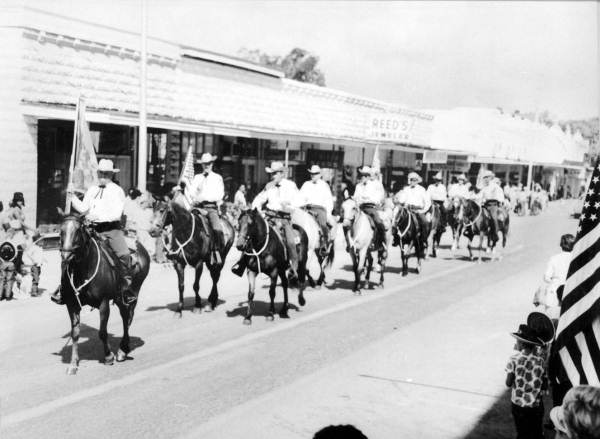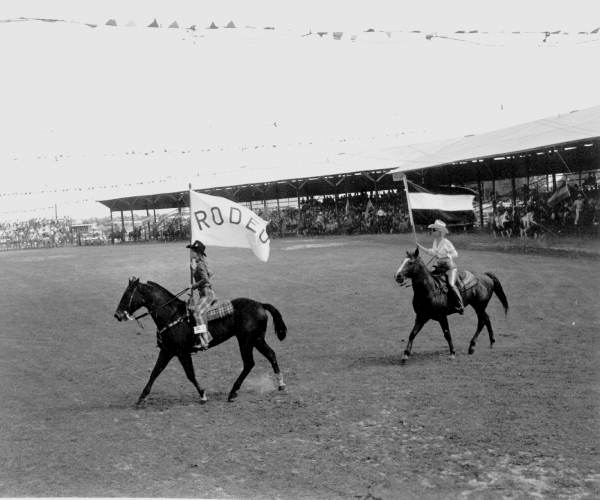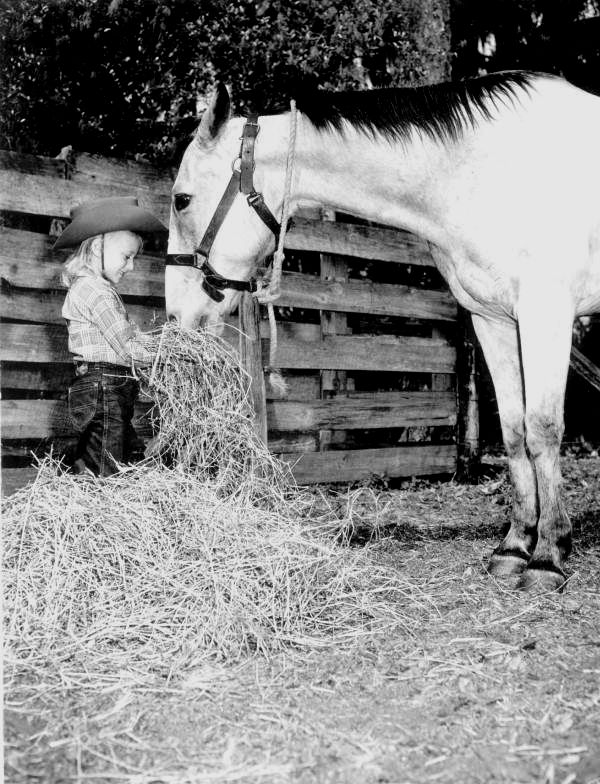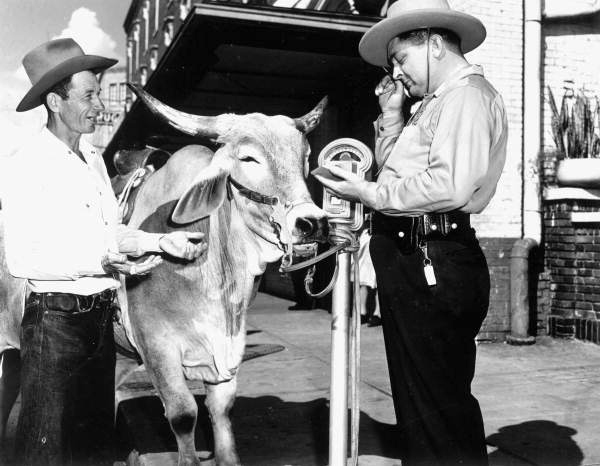Description of previous item
Description of next item
Not Our First Rodeo
Published August 8, 2014 by Florida Memory
Lots of people associate the idea of a rodeo with the American West – Texas, Oklahoma, someplace dusty, hot, and dotted with cacti. And while rodeo is most certainly a big hit out west, it has deep roots here in the Sunshine State as well. Florida, after all, has been home to a thriving cattle industry for centuries. Native Americans and the Spanish were raising cows as early as the 1500s, long before organized ranching arrived in what would become known as the American West. As new settlers arrived and the era of Spanish ownership came to an end, the herds remained, changed hands many times, and continued to serve as a valuable source of food and trade.
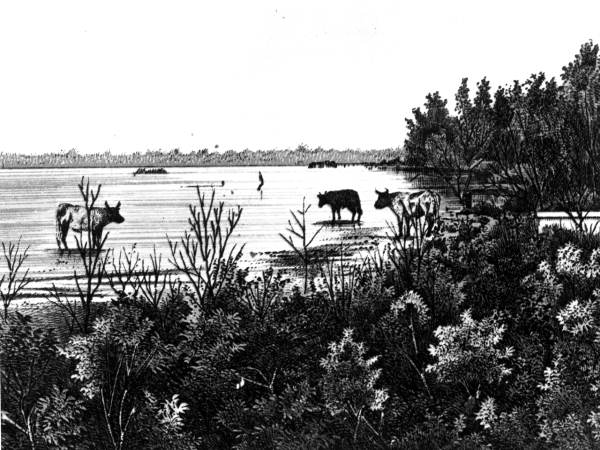
Drawing of the “cow ford” that eventually became the site of Jacksonville. This particular section of the St. Johns River was used for the purpose of fording cattle as far back as the late 18th century (drawing circa 1800s).
Rodeo developed partly out of the practical needs of a farm or cattle ranch, and partly because the tasks involved naturally lend themselves to competition and spectacle. Roping, herding, and branding cattle, breaking wild horses, and overall dexterity in the saddle were all basic needs of even the earliest cattle ranch hands. The events of modern rodeos are closely related to these traditional skills.
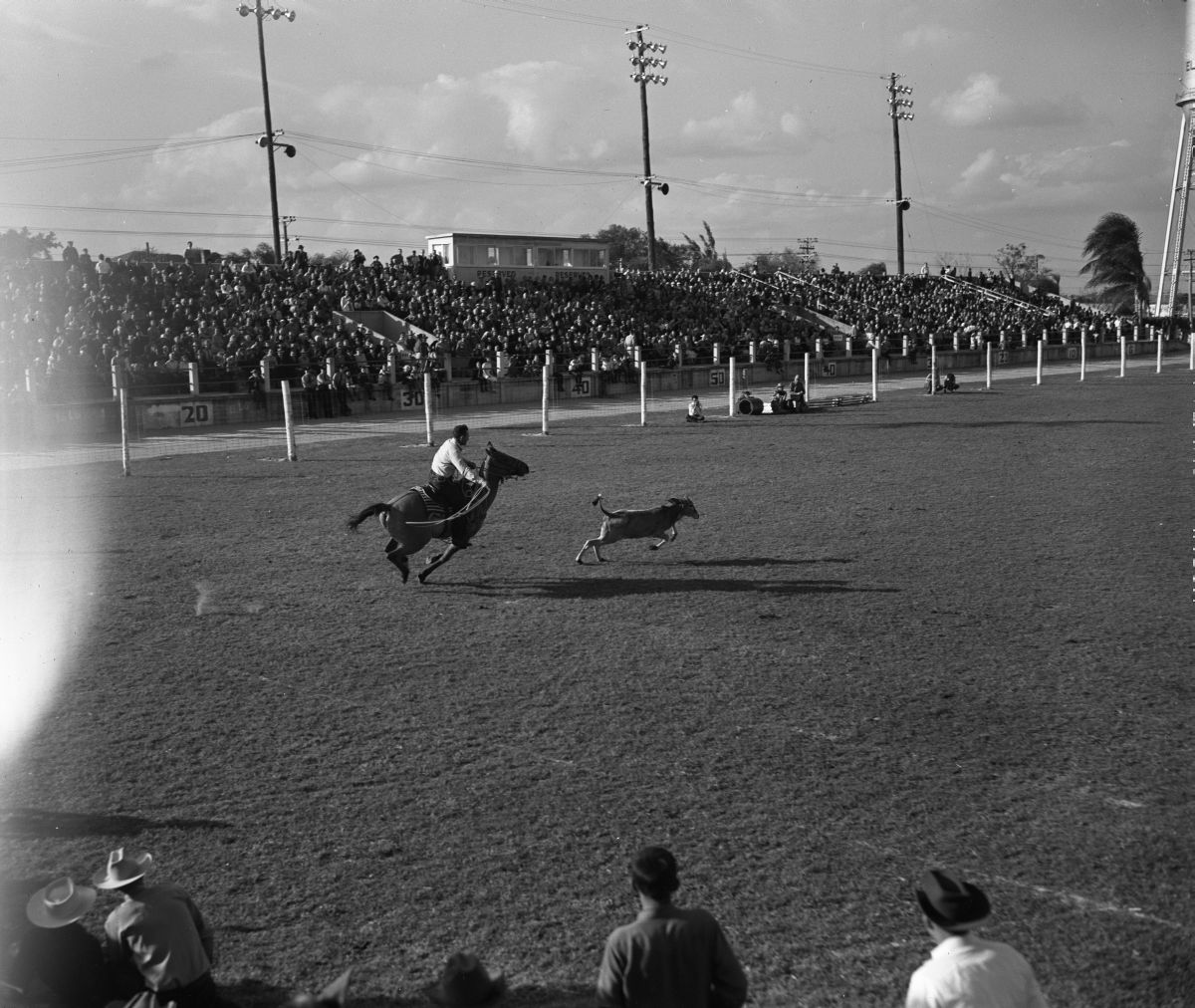
A man prepares to lasso a calf at the rodeo in Lakeland. Capturing cattle to brand and sort them was a vital part of the industry (photo 1950).
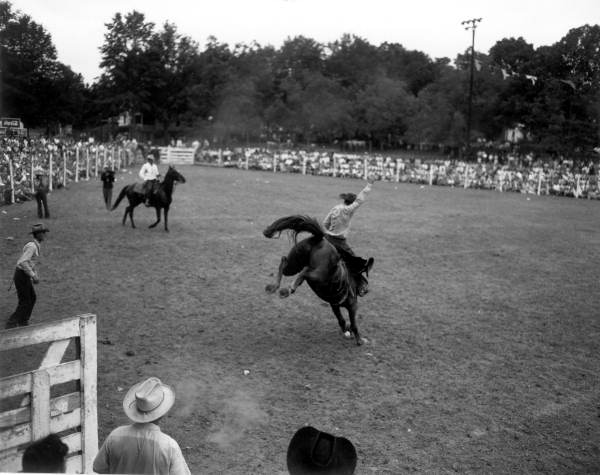
A cowboy struggles to keep his balance as he rides atop a wild horse at the rodeo in Bonifay (1950).
Aside from serving as a demonstration of skill, rodeos have a strong social element that brings together communities like few other traditions can do. In cities and towns where the surrounding region is highly involved in the cattle industry, rodeos are held frequently, and are designed for the entire family to enjoy. Floridians as far south as Homestead and as far north as Bonifay have special annual rodeos with a lengthy past. The Arcadia All-Florida Championship Rodeo, for example, originated in 1928 when the local American Legion post was looking for a fundraiser for a new building. Post officials invited all the local families, including the Seminoles located nearby, to attend a rodeo and parade to raise money for their cause. A band from Wauchula provided music, and even Governor Doyle Carlton rode in the procession. The first rodeo was a smashing success, and even with the arrival of the Great Depression, the people of Arcadia kept up the tradition of holding rodeo events each year. It still continues today.
One of rodeo’s most admirable aspects is its inclusiveness. While the crowd may roar at the spectacle of an adult rider using every ounce of strength to stay atop a bucking bull, there’s just as much enthusiasm for the large number of events held especially for the kids. From rodeo’s earliest days, children have been earnest competitors, demonstrating their horsemanship, roping skills, and overall athleticism in a variety of ways. Older kids with a little more size and experience may compete in junior versions of the same events as adults, while a few events are just for the small fry. At Arcadia, for example, youngsters can participate in the “calf scramble” and “mutton bustin'” challenges. In the calf scramble, an entire army of kids are unleashed on the arena where calves adorned with bandannas have been placed. Those participants who successfully chase down a calf and remove its bandanna are declared the winners. In the mutton scramble, young riders hold onto the backs of sheep as they scurry about the arena. Whoever stays on the longest wins.
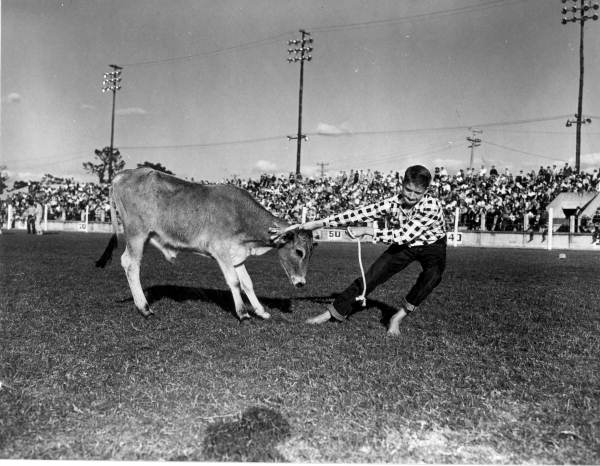
A young man participates in a “calf scramble” at a rodeo in Lakeland. This version of the calf scramble had an interesting twist. If a participant could catch the calf and get him over the finish line, he got to keep it (1947).
These are just a few of the hundreds of images in the Florida Photographic Collection pertaining to the rodeo. Is there a rodeo event near your community? Tell us about your favorite rodeo experiences by leaving a comment below. And don’t forget to share this post on Facebook!
Cite This Article
Chicago Manual of Style
(17th Edition)Florida Memory. "Not Our First Rodeo." Floridiana, 2014. https://www.floridamemory.com/items/show/295207.
MLA
(9th Edition)Florida Memory. "Not Our First Rodeo." Floridiana, 2014, https://www.floridamemory.com/items/show/295207. Accessed December 15, 2025.
APA
(7th Edition)Florida Memory. (2014, August 8). Not Our First Rodeo. Floridiana. Retrieved from https://www.floridamemory.com/items/show/295207

 Listen: The Latin Program
Listen: The Latin Program